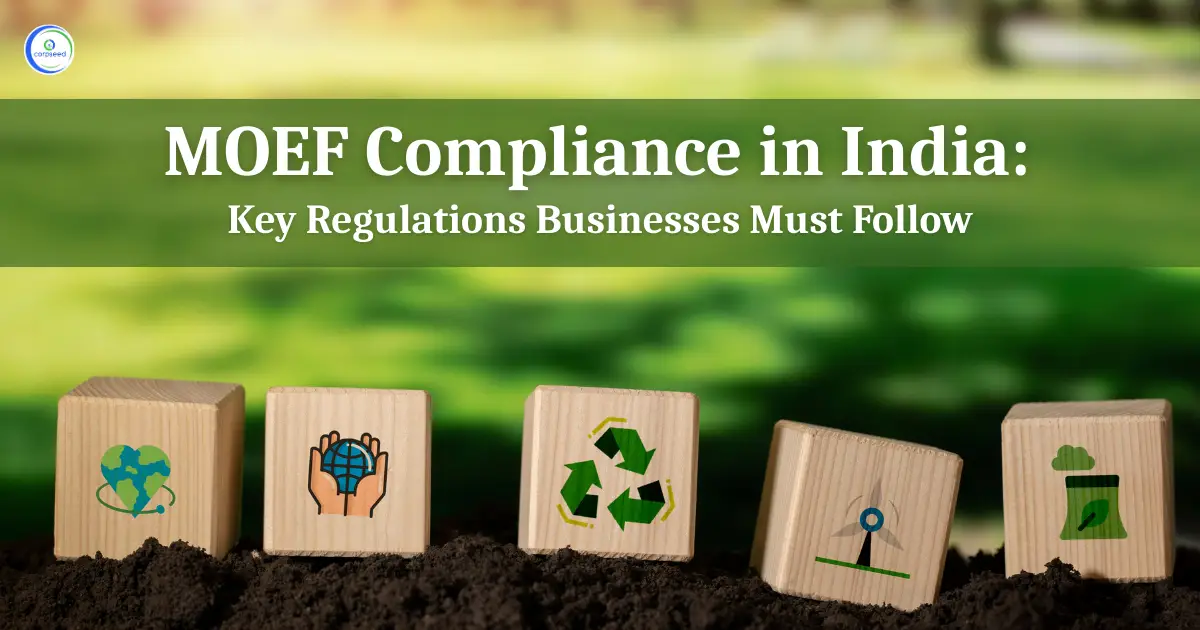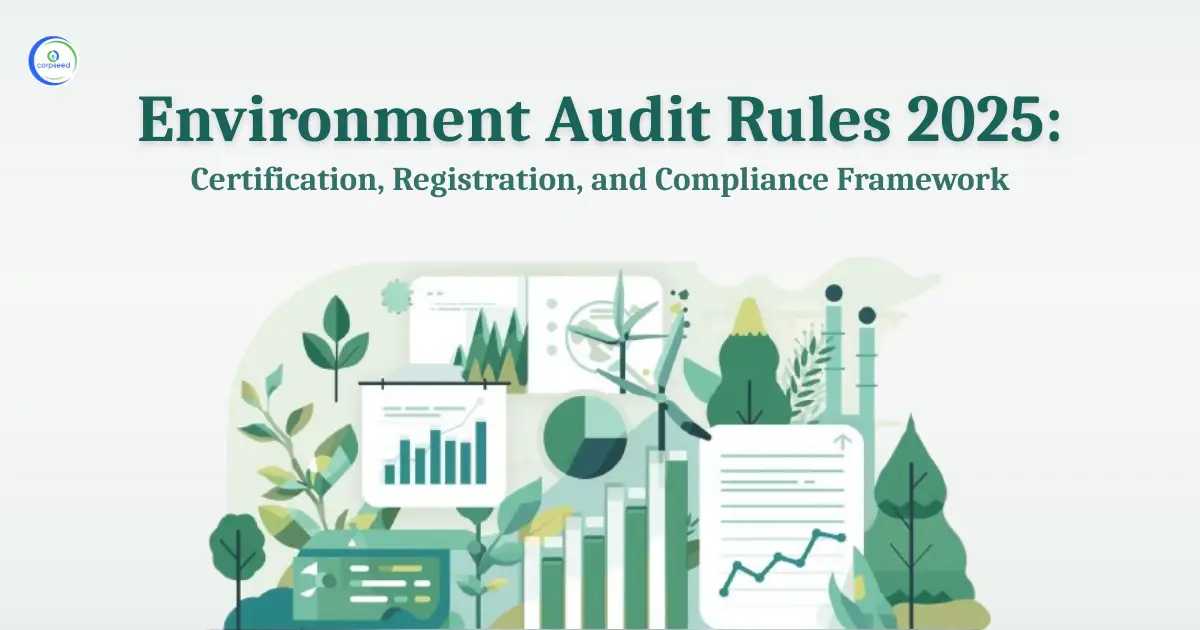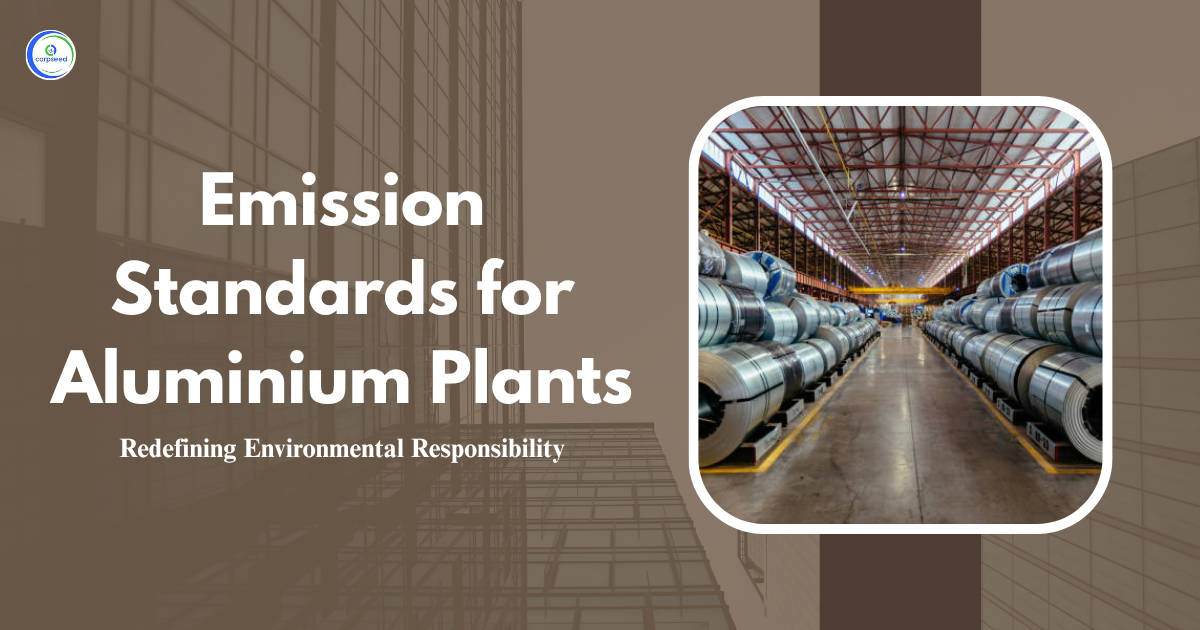Introduction: Environmental Clearance in Gujarat
Businesses from an international level come to India based on the ease that is being provided to them in their establishment. Till now the position of India has been going worse due to the long-driven process for the establishment of a new Project in India. However, the State of Gujarat, the environmental governing body that is the Gujarat Pollution Control Board has been taking up fast measures in the process for the establishment of New Projects, a quick and easy procedure that is being followed. Still, it majorly depends on the Central Pollution Control Board which requires improvement throughout the procedure that is being followed.
Table of Contents
- Introduction: Environmental Clearance in Gujarat
- What is Environmental Clearance?
- What are the Governing Laws Relating to Environmental Clearance and Pollution NoC in the State of Gujarat?
- How to Obtain Environmental Clearance in the State of Gujarat
- Procedure of Obtaining Environmental Clearance in Gujarat
- Exception
- Flow chart Procedure of Obtaining Certificate In Gujarat
- Required documents for Environment Clearance In Gujarat
- Canceling of the Clearance
- Appeals and Challenges
- What is an EIA Report and When Does it Require it?
- What is Environmental Auditing?
- Conclusion
--------------Blog Contact Form-------------
What is Environmental Clearance?
Environment Clearance is the Procedure that is conducted to assess the impact of the project to be established to run by the State-level Environment Impact Assessment Authority, Gujarat. The Environmental Clearance has been made mandatory by the Ministry of Environment & Forests (MoEF), under the Environment Protection Act, 1986.
What are the Governing Laws Relating to Environmental Clearance and Pollution NoC in the State of Gujarat?
There are so many regulations relating to the Environment implemented by the Central government that the Gujarat state follows on a mandatory basis, these are:
- The Environment Protection Act, 1986
- The Water (Prevention and Control of Pollution) Act, 1974
- The Air (Prevention and Control of Pollution) Act, 1981
- The Factories Act, 1948
- The industries (Development and Regulation) Act, 1951
- The Radiation Protection Rules, 1971
- The Hazardous Waste (Management and Handling) Rules, 1989; as amended in 2016
- The Environment Impact Assessment Notification of 1994, (superseded by 2006)
- Wildlife Protection Act, 1972
- Biological Diversity Act, 2002
The Gujarat Pollution Control Board (GPCB) is the Governing body under the Gujarat State which implement the regulation being passed by the Central Government or CPCB.
The GPCB, Government of Gujarat, Forest & Environment Department implements rules and imposes penalties for the violation of existing rules and regulations.
Individuals who want to establish a Project or business even without the intention of causing harm to the environment and living creatures have to obtain permission from the GPCB under the Water and Air Act, EPA 1986. As per the rules made under the Environment (Protection) act, 1986, it is mandatory who obtain permission from the Board to submit a Statement of Environment in the required format before the 30th of September every year.
How to Obtain Environmental Clearance in the State of Gujarat
The new Projects require Environment Clearance which needs to be fulfilled under the regulatory authority guidelines based on the type of Project to be undertaken.
Procedure of Obtaining Environmental Clearance in Gujarat
Screening: The screening process is conducted for Category B type of projects. The Screening process is conducted by the State-level Expert Appraisal Committee which identifies the project category under which it falls.
Scoping: This is the procedure for Project Category A and B1. The Central Expert Appraisal Committee (CEAC) for Project which comes under category A and State level Expert Appraisal Committee (SLEAC) for B1 identifies the terms for the preparation of the EIA report.
Public Hearing: Public hearing is conducted for grievous Environment harming Projects Projects which come under Category A and B1. The Public Hearing is conducted by the District Collector a Chairperson, officials of SPCB and members of Gram Sabha or surrounding locality to record the objection of the public.
Appraisals: The Environment Appraisal Committee and SLEAC finalize the reports, and NOCs and transfer the same to the Ministry of Environment for Clearance purposes.
Exception
There are exceptions to the rules of Environmental Clearance for Industry or Construction based on the region where it will be established. Under certain geographical locations, it is mandatory to obtain Environmental Clearance such as:
- Beach, seashores
- Religious and Historic Premises
- Archaeological Monuments
- Breeding grounds of Specific Species
- Scenic Regions
- Breeding Grounds of Specific Species
- Hill resorts
- Coastal Regions that are highly rich in Mangroves
- Gulf regions
- Biosphere Reserves
- National Parks and Sanctuaries
- National Lakes and Swamps
- Areas of Scientific and Geological Interests
- Seismic Regions
- Tribal Settlements
- Border Regions
- Defense Installations
- Airport Premises
Flow chart Procedure of Obtaining Certificate In Gujarat

Required documents for Environment Clearance In Gujarat
The EIA report shall be Complied with as per the TOR followed during the Scoping stage. Documents required are:
- Project Description (Name of the Project, Location, water requirement, waste management, proposed area, etc.)
- Signatory Details
- Risk Mitigation Details
- Details of Equipment Installed
- Test Report (if applicable)
- Site Layout/ Planned
- Details of Water and Electricity Connection
Conditions for obtaining Environmental Clearance
- The Project Proponent (PP) will get an Environmental Clearance as per the Environmental Impact Assessment (EIA) Notification 2006 and the amendment made on January 16, 2020, for whether they can conduct their operations in the Specified location or not.
- The Company/Project must follow the CPCB/GPCB standard for the treatment of Effluent and wastewater, or drainage system for liquid waste shall be separately operated to not to pollute groundwater, river, coastal areas, or surrounding environment, and must be prevented to runoff of any contaminated liquid waste, into the nearby water bodies.
- The disposal of waste must be done as per the rules and regulations made under the HWMH rule, 2016; according to this, there must not be any effluent/ mud/residue shall be discharged into/ disposed of into the nearby surface water bodies. There must be special waste management as per the notification vide GSR. 546, August 20, 2005, so that the disposal of solid waste, and fluids offshore and onshore should be strictly followed.
- There must be the adoption of proven technology for the prevention and mitigation of waste material and recyclable waste shall be disposed of at the authorized recycling facility.
- There shall not be digging of borewell for fresh water requirements by the Project Proponent.
- The Project Proponents (PP) shall maintain the complete Zero Liquid Discharge (ZLD) at the time and the drainage system shall be gone outside the premises of the PP.
- The PP shall comply with the National Ambient Air quality standard issued by the Ministry vide G. S. R. No. 826 (E) dated 16th November 2009 that shall be complied with.
- The location-specific policies of GPCB shall be followed by the Project Proponent concerning the discharge of pollutants, and shall carry out the Project with the same.
- The PP has to adhere to the guidelines and stipulations being made by the GPCB, State Government, and any other statutory authorities.
- The existing Environmental manual and other initiatives shall be taken to make awareness at every level of management. And environmental monitoring shall be made at the Project site.
Health and Safety Concerns
- Project Proponents shall carry out the work as per the prevailing guidelines keeping in mind all the safety plans in the sensitive area looking for emergency or accidental concerns.
- There shall be all necessary safety precautions and human safety measures for the Worker/Employee who are working on the premises.
- There must latest available technology for various risk analyses for accurate prediction and disaster management plans (DMP).
- At every hazardous place in the Workplace, there must be Personal Protective measures and related equipment to be provided to the employees and its usage shall be ensured to the workers.
- The rules and regulations made under the factories act must be followed by the Project Proponent who falls under such category.
- A blowout preventer system shall be there for the emergency call.
- Emergency response plans shall be there per the OISD, DGMs, and the Government of India.
Water Control Measures
- As per the Project Installation system, there shall be a predefined amount of water that shall be exceeded on any account. And the water effluent shall be treated with the premises. The freshwater requirement shall be defined by the governing authority.
- Project Proponents shall not dig borewells for freshwater requirements without the permission of the CGWA authority.
- The Industrial effluent shall not be exceeded beyond the limit defined by the appropriate authority.
- Waste water shall be limited as per the defined level by the assessing authority of GPCB and it must be treated by such defined provisions, such as the utilization of it for gardening, and plantation purposes within the premises.
- There shall be a buffer water storage tank of adequate capacity for waste water treatment on rainy days.
- The emissions in the work zone environment shall be taken into account.
- Internal audits and green measures shall be maintained.
- Airborne measures shall be made and water sprinklers for dust control shall be installed at a suitable location in the plant.
- The green belt is all around the boundary along with the proper road to lessen dust emissions.
- The Project Proponent shall make all additional measures that may be imposed by the SEAC and SEIAA or other authorities for environment protection and management.
- All required measures shall be taken as per the Water (Prevention and Control of Pollution) Act, 1974, and the Air (prevention and control of pollution) Act, 1981, which shall be controlled by the State Pollution Control Board.
- The Project Proponent shall allocate funds for Corporate Environment Responsibility (CER) by the MoEFCC’s office dated 01/05/2018 to carry out other activities under the CER in the affected area of the project. And all such activities shall be monitored and reports shall be maintained by the regional office of the MoEFCC as a part of the Half-yearly compliance report and to the district collector.
- The Project Proponent shall join and participate in a common environmental facility both financially and technically and when the same is being taken up either by the industrial association or GIDC or GPCB or any such authority which works for such purposes.
- There shall be no further expansion or modification of the Project which might cause environmental impacts without prior Environmental clearance.
- All these conditions shall be enforced as per the provisions of the Water (Prevention and Control of Pollution) Act, 1974, Air (Prevention and control of pollution) Act, 1981, the Environmental (Protection) Act, 1986, Hazardous Wastes (management, handling, and trans boundary Movement) Rules, 2008 and the Public Liability Insurance Act, 1991 along with their amendments and rules.
- The Project Proponent shall have to comply with the terms of “the Companies Social Responsibility Policy) Rules, 2014” and its amendments from time to time.
- The Project management shall have to mandatorily submit half-yearly reports for the stipulated period of Environmental Clearance in soft copies to the relevant regulatory authority as per the law, every 1st June and 1st December.
- The environmental clearance remains valid for seven years from the date of issue.
- The project managers shall inform the GPCB, MoEF, and SEIAA about the date of start of the project, the date of financial closure, and the final approval of the project.
Canceling of the Clearance
Providing false information or concealment of facts and data submission being wrongly made can result in withdrawal of this clearance and attract actions under the provisions of the Environmental Protection act, 1986. They shall adhere to all the norms of the Gujarat pollution control board.
The SEIAA may revoke or suspend the clearance, if documents found are non-satisfactory.
The false and misleading document submissions, which relate to the screening or scoping or appraisal or decision on the application make the environmental clearance canceled.
Appeals and Challenges
The appeal against the Environmental Clearance shall lie with the National Green Tribunal, within 30 days as prescribed under Section 16 of the National Green Tribunal Act, 2010.
What is an EIA Report and When Does it Require it?
EIA is a short form of Environmental Impact Assessment, a procedure to evaluate the environmental impact that might arise from the Project being established. Through this process, the economic and environmental cost of the project is declared by the authority. This assessment is conducted by the Project Proponent and private independent agencies like NCAER, NEERI, etc.
What is Environmental Auditing?
In Gujarat, Environmental Auditing is going on since December 1996, The environmental auditing is conducted by the team authorized by the Gujarat Pollution Control Board, Gandhinagar. The qualified individuals are appointed by the Board who visits the industry, conduct field studies as per the law, and collect samples of every environmental affecting body for Air, Stack, Wastewater and effluent, Noise, Solid and Hazardous Waste, etc, following which the lab research is conducting if required of the polluting agent and its quantity, and prepare a detailed report consisting of compliance report as per the Environmental Clearance general and Special conditions, observations are made at the Environment Management System and recommendations are made to the Project Proponent based on the same report.
Conclusion
Environmental clearance is required for every Project from the very beginning to get authorization for running the Project. The Clearance Board provides effective measures to further minimize the Polluting agents and such reports of the Board should further be communicated to the associates, and partners for further suggestions to minimize the loss to the Environment. The absolute power is given to the government which finalizes whether the establishment should run or not. The Associates, Stakeholders, and Partners help to minimize harmful effluent being generated and prescribe steps to minimize the environmental harms and maximize the benefits.
This portion of the site is for informational purposes only. The content is not legal advice. The statements and opinions are the expression of author, not corpseed, and have not been evaluated by corpseed for accuracy, completeness, or changes in the law.
BOOK A FREE CONSULTATION
Get help from an experienced legal adviser. Schedule your consultation at a time that works for you and it's absolutely FREE.







_Corpseed.webp)
.webp)
